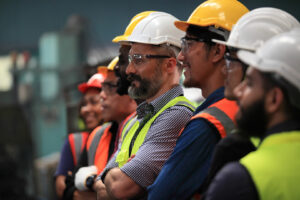
With myriad management books released yearly and a plethora of entrepreneurs offering hacks and shortcuts, there is a huge amount of competing views on how to radically transform your business for the better.
However, when it comes to supply chain management, we know there’s no magic bullet or crystal ball that we can promise that will pave the way to success.
With that in mind, however, we have noticed some key differentiators that market leaders are putting in place that are going to be essential over the coming 24 months.
Having seen off disruptions, whether from natural disasters, resource shortages, global trade conflicts or other inevitable yet unpredictable events the push for ever more resilient and agile supply chains remain for those companies that want to survive, thrive and leapfrog the competition.
We believe these four strategies rise above tactical hacks and instead focus your energy on useful and practical targets for the future.
Focus – The Rise of Customer Centricity
The future of the supply chain will be an embedded customer-centric function that is dedicated to value creation and a capacity to sense customer needs and wants and deliver on those demands.
This is a fundamental rebalancing of operational excellence into commercial innovation for business growth.
This focus will, over time, become a cultural shift within organisations and bring sales, marketing and supply chain into an ever-closer symbiosis.
A customer-centric supply chain culture requires a customer experience (CX) mindset, and the ability to measure performance against CX outcomes, analyze CX insights and take actions that improve CX. This is an essential change from internal operational measures to external customer-based success metrics.
ESG – The Need for Authenticity
While many business leaders are making commitments to environmental, social and governance (ESG) or diversity, equity and inclusion (DEI) goals – the next 2 years will be where they have to walk the walk and practice what they’re preaching.
This action is driven in response to pressure from customers, investors, government and other stakeholders. There are many studies citing that customers care about these metrics and buying from companies with values aligned to theirs (however we may be cynical that this doesn’t happen quite so often in practice when “doing the right thing” costs a little more or is less convenient!)
Even with this in mind, if companies want to achieve competitive advantage and tick all the right boxes to win work contracts in the future, visibility and transparency on all of the associated ESG and DEI metrics need to be identified, collected, and analysed and then planned against for improvement.
We’ve seen lots of our clients come on board for exactly this reason – to collect and store data centrally across a huge array of functions so that it can be analysed and presented in audits quickly and effectively.
Real-Time – Faster, accurate consistent decisions
Forward-thinking supply chain leaders know that data is the new oil and supply chain professionals are under growing pressure to capture data more quickly than ever, to analyse and act.
Being faster to adapt can elicit a huge competitive advantage and commercial success.
The first step on this path is to invest in supply chain technology that enables the collection and analysis of supply chain data.
The second stage is to begin to adapt your processes to enable decisions to be made in a lean and agile way.
The elephant in the room is that your supply chain talent will have to alter their function and mindset to process this data. Moreover, the role of the supply chain professional will morph in its core capabilities and competencies.
Talent – People focus
It may seem obvious but to achieve all of the previous three strategies – you need the right people.
The difficulty is that finding the right talent or nurturing the new customer-centric, data-driven mindset isn’t an overnight task. Reinventing the workforce in 2022 means re-looking at the job descriptions, functions and competency frameworks you have in place and reviewing them against an entirely new set of directives.
It will take a deep and detailed reflection on where you are and where you need to be – which will hopefully deliver some ideas of how you get your people there with you.
This may need to drive some tough decisions on current staff, or to consider hybrid models of working where high-value talent may be in different locations or time zones – but all the talent cards need to be on the table if you’re going to lead in this new dawn of supply chain management.
Bringing it together…
We still firmly believe that there is no quick fix to future-proof your supply chain operation but by considering these four strategies that are becoming ever more prevalent will begin to prepare you for a positive future.
If you can keep your customer focus, deliver ESG authentically, invest in technology that enables quicker data-driven decision making and upskill or recruit your talent base in preparation for the ever-changing supply chain landscape then you’ll be in pole position commercially to reap the benefits.





